Let’s talk...
About different feelings: we can ask our child: Why do you think Farah loves mangoes so much? How did Farah feel when she found no fruit on the tree, and how did her feelings change at the end of the story? What was Farah’s new discovery about the mango tree?
About similar experiences: we can our child: Do you have a favourite fruit or food like Farah? What is it, and why do you like it?
About desires: Farah tried in many ways to get what she loves. We can ask our child: Have you ever wanted something very badly and couldn’t get it? How did you handle it?
Let’s enrich our language...
We can examine the colour-rich illustrations with our child and describe what we see, especially the tree’s hidden world
Let's taste...
We can prepare a healthy snack of mango slices mixed with yogurt together, adding a little honey or granola. We can talk about the importance of healthy eating and what we like to eat from it
Let's connect with nature...
We can encourage our child to contemplate the nature around us and discover its hidden worlds. What hides under the stone, between tree branches, inside the earth, or in a small water pond?
Let's move...
We can imitate Farah’s movements while searching for mangoes–we can imagine we’re climbing trees, picking fruit, digging the earth, walking in the garden, giving the tree milk, and wrapping the scarf around it.
Let's research...
The story takes place in India. How can we tell that from the story?
In India, there are different names for mangoes, and in our country, there are different names for olives. Do you know what they are?
Let’s talk...
About different feelings: we can ask the child: Where is grandmother? Is she really present? How does the child in the story feel? What did she do to deal with her longing? Could there be other feelings the child has that aren’t shown in the story?
About similar experiences:we can ask the child: Have you ever lost someone or something dear to you? Do you miss them? What can you do when you’re missing them? In case of losing a grandfather or grandmother-let’s share beautiful memories together: what did we love to do together?
Let's observe...
The illustrations take us to the beautiful world that united the granddaughter and grandmother. Let’s examine the drawings and notice the items that passed from grandmother to granddaughter, and other items similar to what we see in our grandparents’ homes.
Let's communicate...
We can visit our grandmother or grandfather, tell them how much we love them, and together create an album or box of photos and items of beautiful memories with our grandparents.We can go to the sea together and collect different shells and stones.
Let’s explore...
We can think about the illustrations and try to guess which city grandmother’s house is in. We can recall other coastal cities in our country and learn about them.
Let's talk...
About the child’s feelings: We can read the story with our children several times. We then follow the illustrations and discuss them as an expressive panel and talk about the feelings of both the child and the grandfather during their joint activities.
About the relationship with the grandfather: We can talk to our child about the things he loves about his grandfather and grandmother, and the things that sometimes bother him.
About family relationships: The book presents the child’s experience of spending enjoyable time with her grandfather. We can talk to our children about the shared activities that our children love to do with their grandparents, aunts, uncles, and extended family.
Let's create...
Let’s prepare an album of the most beautiful moments with family members and relatives.
Let’s plan and create a house for our favourite pet with the help of grandparents.
Let's communicate...
Let’s visit our grandparents and initiate a fun activity together, such as gardening, going for a nature walk, playing chess, and more.
Let’s have a conversation...
About the title “For whom does the cloud smile?”: We can discuss the title with our child and ask them: For whom, according to you, does the cloud smile? And why?
About our child’s hobbies and interests: Amir likes to watch the weather. We can talk with our child and ask them: What are the things that they like to do?
About the behavior of the characters: Amir watched the two cats, the doll merchant, and the students hide from the rain. We can ask our child: What do they like to do when it rains? How do they behave?
About our relationship with our grandparents: Amir told his grandmother that he knew for whom the cloud smiled. What did he mean by that? How was his relationship with his grandmother? We can talk with our child about the things they would like to do with their grandparents.
Let’s create and imagine...
Various shapes are formed from clouds: we can look at the clouds with our children and imagine what they could be.
Let’s enrich our language...
We can enrich our child’s language and explain to them new words: flags, forehead, curled up – and make it easier for them to use in our everyday language so that they become part of their linguistic dictionary.
Let’s explore...
Amir asked: “For whom does the cloud smile?” We can think about the environmental phenomena in our environment and encourage our children to formulate questions about them. We can also look for information with them.
A question...
Where does rain come from? A question that leads us to search the Internet with our children.
About the girl’s feelings...
About the girl’s feelings: We read the story with our children several times. We then follow the drawings and treat the drawings as an expressive painting, and we can talk about the feelings of the girl and the grandmother during their dialogue.
My relationship...
My relationship with my grandparents: We can talk with our child about the things they love about their grandfather and grandmother, and the things that annoy them sometimes.
Relationships with the family...
Relationships with the family: The book shows us the beautiful and warm shared time that the child spent with her grandmother. We can talk with our children about the common activities that they like to do with grandparents, uncles and extended family.
We enrich...
We enrich our linguistic dictionary: Many animals with their different descriptions are mentioned in the book. We can keep track of the grandmother’s description of animals and add new traits and information about them.
Grandma described...
Grandma described the animals to us in a humorous way. We can imagine new fantastical animals, and add funny events to the story; For example, we can imagine a two-legged snake, or a rabbit with a trunk. We can invite our children to let their imaginations run wild, as the grandmother did. We can try to draw those funny animals
We can play...
We can play charades with our children. It is a game that allows them to develop their language and thinking by imagining, describing and expressing the characteristics of objects and animals.
We can browse...
We can browse the family album, and together we can recall family experiences and occasions with grandparents.
We invite our child...
We invite our child to think of his grandfather/grandmother. Does he/she resemble the grandmother mentioned in the book? What else distinguishes him/her?
Each picture in...
Each picture in the book includes many small things that can catch our children’s attention while we read the book together. Encourage them to describe these drawings using sentences that begin with the phrase “I see…”
We can chat...
We can chat with our child about an older person who they feel comfortable with and whose company they enjoy. S/he may be a member of the family or an outsider. What do they like to do with him/her?
The girl’s picnic...
The girl’s picnic with her grandfather extends from morning to evening. Together, we can trace the elements in the pictures of the book that indicate the change of time in the story. What evening rituals do we do in our family to end the day?
Our child may...
Our child may want to design a small bag, on which they will stick the phrase “my tiny perfect things.” Every time our family goes out for a walk in nature, our child can collect little things that intrigue their curiosity, and we can then chat about them with our child.
Perhaps they want...
Perhaps they want to draw or photograph these things instead of collecting them, and prepare a small book in which they describe what they found.
What do the lines...
What do the lines on tree leaves look like? We can collect leaves together and place a white paper on top of each one, then we can follow the lines with a colored pencil over the paper as we press hard, and the details of the leaves will then appear before our eyes!
With our child...
With our child, we can track the feelings of the grandfather in the book. Which things bring him joy, and which cause him sadness or confusion?
We can invite...
We can invite our child to think about his/her grandparents. Do they look like the grandfather in the book? What else distinguishes him/her?
We can recall...
With our child, we can recall what they love about their grandfather or grandmother, and what sometimes bother them. We can talk about the things our child would like to do with their grandmother/grandfather.
The grandfather...
The grandfather in this book is gradually losing his memory. Some grandparents may suffer from other health problems, such as heavy hearing, poor eyesight, or limited mobility. We can chat with our child about what they can do to help their grandmother/grandfather.
The house of...
The house of grandfather and grandmother has its smells, tastes, and distinct sights that inhabit the memory of children when they grow up. We can chat with our child about what they love in their grandparents’ house. Is there a corner in the house that they favor? What do they like to do there?
In the book...
In the book, the grandson expresses his love for his grandfather in different ways, as he plays with him, hugs him, and goes for a walk with him. We can encourage our child to think about a way that expresses his love for his grandfather and grandmother: maybe a small gift that they can make, or doing something they love…
My grandfather was...
“My grandfather was young once…” It is nice for our child to browse a photo album with their grandfather, and hear their grandfather’s stories about his childhood. We can also make a photo album that brings our child together with his grandfather/grandmother. There is no doubt that our child will keep it close to their heart.
Emily refuses to...
Emily refuses to cut her hair or to eat carrots, and throws a temper tantrum. We can talk to our child about what makes Jana angry in these two incidents: Maybe she is scared to cut her hair? Or maybe she does not like the carrots?
We might want...
We might want to encourage our child to talk about an incident where he/she felt angry. How did our child deal with it?
Emily feels frustrated...
Emily feels frustrated during her friend’s birthday party and expresses this feeling by creating a mess. Have we ever felt like Emily? What did we do?
Grandmother showed...
Grandmother showed Emily how she can stay the way she is but in a happier version of herself. She encouraged her to behave differently with Amir in the park instead of being angry. We can recall with our child incidents where he/she felt angry and think if he/she could behave differently.
I am now an angry tiger...
I am now an angry tiger or a happy tiger! Sometimes it is easier for children to express their feelings in play, so let’s help them. We can draw a happy tiger’s face and an angry one on two piece of papers and keep them readily available at home for our child to use whenever he/she needs to express his/her feelings.
We can check...
We can check in our library at home, or the public library for two books, which were distributed by Maktabat al-Fanoos: “Where Do I Go When I Am Angry” and “Amir’s Smile”. Both books are about anger and happiness from different point of views.
Grandmothers and grandfathers...
Grandmothers and grandfathers have a special place in most children’s lives. And the grandparents’ house has its unique smells, tastes, and distinct sights that inhabit the memory of children when they grow up. We can talk with our child about the things they love in their grandparents’ home or in the house of any other person who is close to the family and to our child. Is there a corner in the house that they favor? What do they like to do in their grandparents’ house?
The grandmother in...
The grandmother in the story expresses her concern for her grandson in different ways. We can talk with our child about their interactions with their grandmother or grandfather and how they express their love to each other. For example, preparing a favorite dish, buying small gifts, or telling the grandchildren interesting stories. We can also talk about what we can do to express our concern for our grandmothers and grandfathers.
Do you remember...
Do you remember the hilarious “broken phone” game? The family members sit in a circle, and one of them quickly whispers a word in their neighbor’s ear. The second has to whisper what they heard in the other neighbor’s ear…and so on, until the whispered word reaches the last person in the circle, just to discover that what they heard has nothing to do with the original word!
We can test...
We can test various methods to enhance the delivery of sound to a far location, such as encircling the mouth with both hands, and ways to improve the hearing of sounds, such as tilting the outer ear forward. Are there other methods?
Together, we can...
Together, we can design an amplifier from household items, such as: a cardboard tube, metal foil, or paper cups. We can test a number of amplifiers from different materials and compare them: which sounds best?
We can read...
We can read the title and talk to our children about what they consider their most precious present: What characterizes it? Also, we can have a conversation with our children regarding the good and the positive feelings which we feel, which people in general and children in specific feel, when we get a present.
Little bear found...
Little bear found several presents. We can follow his presents, and ask our children, what happened to these presents? What other presents could he have found during his trip?
We can think...
We can think of someone that our child loves, who has a birthday, and try to think together how can we chose a present for her/him.
Little bear tells...
Little bear tells us that the precious presents are not the expensive ones, but those that we really love and admire. It is important to encourage our children to make their presents for people they hold dear. We only need to bring them simple materials, and spend nice time with them making their presents.
In general...
In general, a present symbolize love. What diverse ways – other than presents – we can express our love to people?
Not only does...
Not only does little bear grandma’s get a present, but little bear himself and his father get a most wonderful present as well: such as, having a wonderful time together playing, talking, and discovering the beauty of nature in different seasons. What do you think about experiencing a similar trip with your children?
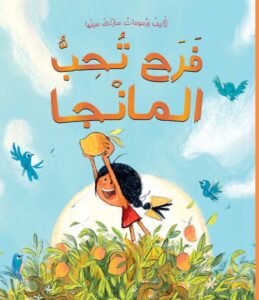 Farah Loves Mangoes
Farah Loves Mangoes  Good Night, My Star
Good Night, My Star 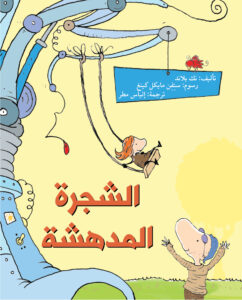 The Amazing Tree
The Amazing Tree 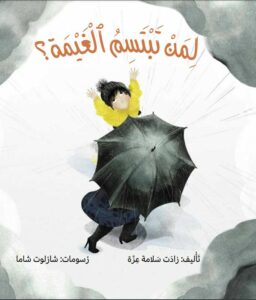 To whom the cloud smiles?
To whom the cloud smiles? 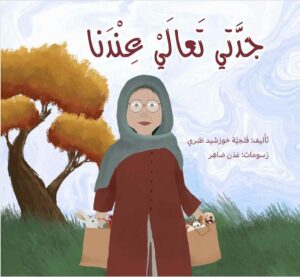 Grandma is Coming for a Visit
Grandma is Coming for a Visit 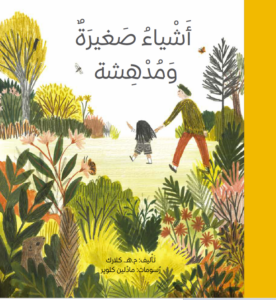 Tiny perfect things
Tiny perfect things  The Turtle Who Wanted to Climb Mount Everest
The Turtle Who Wanted to Climb Mount Everest 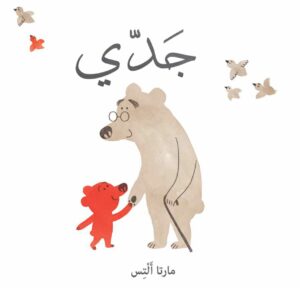 My Grandpa
My Grandpa 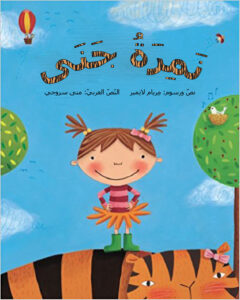 Emily’s Tiger
Emily’s Tiger 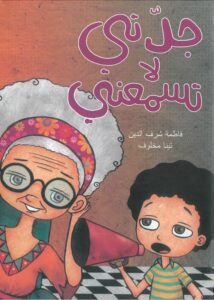 My Grandma Doesn’t Hear Me
My Grandma Doesn’t Hear Me 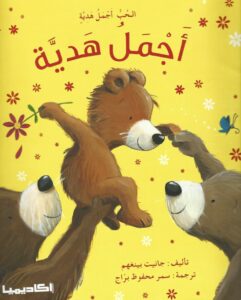 The Best Present
The Best Present 
